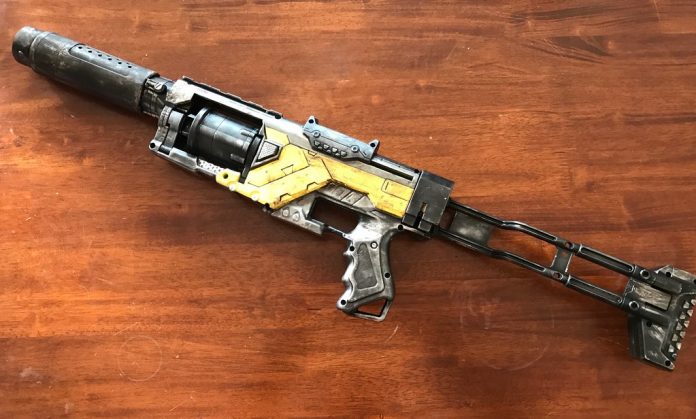Can you use spray paint on a gun?
The simplest answer to this question is yes; however, there are things to consider to ensure that your gun will have a nice coat.
Generally, spray painting guns can either be a design or a preservation strategy. For complicated patterns, it can be a bit more tricky, such as when you spray paint rifle camo.
We’ll be discussing the general know-how that you should keep in mind before spray painting your gun below.
The Art of Preservation
Compared to hot bluing and using stronger, more harmful chemicals, spray painting a gun is a relatively safer DIY method to better finish a firearm, especially in the areas of its stocks and grips.
Though hot bluing creates a more thorough finish, for guns that are more regularly used, the more pragmatic way of keeping them at their best is to opt for spray painting. Depending on how well you apply the spray paint, you can get the job done by protecting the metal of your gun with a thorough coating.
This is why spray painting, in general, has grown into a lot of people working with art for both design and practical purposes.
Knowing Your Paint Job
You’re looking for one that will work on metal. Additionally, it should be the kind of paint that can withstand pressure and heat since you’ll be using it on your gun. That being said, you’re looking for paint that coats well for both indoor and outdoor use.
More tips on selecting the kind of paint that you want are that you also need to decide if you’re looking to camouflage it with a matte finish or if you wish to make it look sleek and new with a glossy finish. Both selections are available, depending on the paint that you’ll choose.
A hiccup in the process that you should know ahead of time is that there are instances where sprayed-on paint doesn’t hold on to the surface well. This is due to an aerosol mishap and can be remedied by taking quick action to seal the coating immediately.
If you’re spraying on a scratched surface, spray paint can’t really hide these changes in texture and will most likely appear as gaps. The best way is to go with the full hot bluing method.
Some Important Reminders
Prior to getting into handyman mode, make sure that you are working on an unloaded gun. Next, take photos of your gun, both assembled and disassembled, so that you’ll remember which part goes where.
As you disassemble it, ensure that you clean each part well and that you degrease it so that the paint will stick to the surface better. A simple life hack for this is to use acetone. Once all areas have dried up, wear gloves.
For any part that shouldn’t be painted, buy painter’s tape and silicone plugs to cover them up. For your safety, make sure you’re wearing a respirator and not just some cloth or medical mask as you do your work.
Finally, unless you’ve worked many times using spray paint, it might be best to practice creating even and thin strokes first on cardboard or a different surface before you actually work on your gun. The aim here is to create a finished look and not make it look like paint.
You must find the right balance, stroke, and pressure to achieve that. If you put too much paint on, it will look runny, and you’ll have to start over again, not to mention washing the paint off and drying the part again.
If you’re spraying from too far off, you’ll end up with the aerosol hiccup mentioned above, and the coating won’t protect. More so, it will make the material less durable. The best place to start is to practice first before getting on with your project.
Let’s get painting!
There are three common ways you can approach this project:
1. Using a Rattle Can Finish
…and a trusty Scotch Brite pad. Rattle-can spray paint is one that has metal balls inside, which keeps the paint inside thoroughly mixed. They are the most accessible of the three listed here.
The only problem with this is that they have a hard time sticking to smooth surfaces, which is why scrubbing off the surface with a Scotch Brite pad prior to spray painting is essential.
2. Investing in a Sandblaster
If you’re willing to work on the project with a bigger budget, a sandblaster is a tool that will ensure that spray paint will coat well on the surface.
3. Going for a Heat-Cured Finish
Though the most tedious process of painting your gun, a head-cured finish is the one that delivers the best-looking and most durable coating you can do to your gun.
Going back to the question, you can definitely spray paint your gun for both design and functionality. All you need are the right materials and patience for practice.







